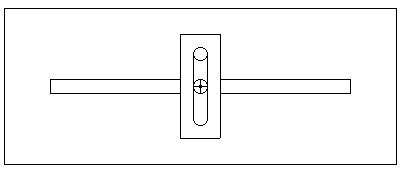
Key Takeaways: What You will Learn About Actuators
- ► Actuators are everywhere from automatic doors to industrial machinery, they convert energy into mechanical motion to control movement with precision and purpose.
- ► Actuators can be powered by electricity, hydraulics, or pneumatics, each offering unique advantages depending on the application.
- ► Linear actuators push or pull in a straight line, while rotary actuators rotate to perform tasks like clamping or valve control.
- ► In addition to movement, actuators also prevent unwanted motion, ensuring safety and control in critical systems.
What is an Actuator? Definition
You may not realize it, but you come into contact with an actuator every single day. They get everything moving, literally. Actuators operate motors, doors, valves, everything!An actuator is a mechanical or electro-mechanical component of a system that controls the movement of an instrument. These movements are very deliberate with precise positioning and they manage the workings of anything that requires a mechanical force. Equally as important to the actions they create, actuators are also designed to prevent movement, when required. There is not a single industry that is not reliant on actuators, including test and measurement solutions.
How do Actuators Work?
Actuators require a power source, something to convert that power into a mechanical force and a controller to make sure it’s doing the task it’s supposed to do in order to achieve the desired result.
The energy source can be manual, electrical, hydraulic, or pneumatic. All these options can be applied to both linear and rotary actuators and offer different advantages. Manual actuators are less common in industrial settings, so the remainder of this article will act like they do not exist.
Types of Actuators
Linear Actuators
Electric linear actuators use a motor to generate fast motions and a gearbox to slow down its output. This increases the torque used to turn a screw and creates the direct movement of a shaft.
Hydraulic linear actuators achieve the same result using hydraulic pistons to produce torque strong enough to move what needs to be moved. Hydraulic actuators are capable of producing huge amounts of torque but can be a more unbalanced energy due to shaft displacement.
Pneumatic linear actuators are similar to hydraulic actuators but use compressed air instead of fluid to create movement. They are fast, cost effective and precise and can handle a bit of a beating like abrupt stops. Since they are powered with air, they are a safer alternative in scenarios with a higher risk of explosion, like mining.
Rotary Actuators
Like the linear version, electric rotary actuators use electricity to achieve the desired movement, which in this case is circular. This can be a full 360° rotation or stopped at a set angle. Rotation and torque are generated as a result of the force from the conductor carrying a current within a magnetic field.
Hydraulic rotary actuators leverage either one or two circular shafts that travel using defined grooves. When the teeth on the shaft connect to splines on a piston, the shaft will rotate. This is achieved when the hydraulic fluid from a control valve puts pressure on the pistons and applies a force on the shafts. If the valve is shut, the shaft will be locked in place.
Like the linear version, pneumatic rotary actuators, are relatively simple and ideal for applications in dangerous environments. These actuators essentially tweak their linear cousin to create a rotation. There are different methods to achieve this. One example is a slotted link mechanism. This creates a reciprocating motion by moving a slider back and forth and converting it into a rotation. A piston will be directly coupled to the slider via a pin attached to the rotating portion.

By BRoys - By Uploader, CC BY-SA 2.5, https://commons.wikimedia.org/w/index.php?curid=1526011
Different Energy Sources
Depending on the application, actuators draw from different energy sources including electrical, hydraulic, or pneumatic.
Electric Actuators
Electric actuators are considered precise, clean, and easy to integrate with digital control systems. They are very low maintenance and easily programmable. Typical applications include robotics & automated manufacturing, consumer electronics, and smart home devices.
Hydraulic Actuators
Hydraulic actuators leverage pressurized fluid to produce force. They are often in heavy machinery, aerospace systems, and brakes. This is mainly due to their high power density, and they require thorough maintenance to avoid potential leaks and/or fluid degradation.
Pneumatic Actuators
Pneumatic actuators use compressed air to create movement. They are not as precise as electric actuators, but they are fast, lightweight, clean and less expensive. They are often found in packaging lines, material handling, and medical devices.
Where Are Actuators Used? Applications and Examples
Actuators are everywhere from the factory floor to way up in the clouds.
Manufacturing and Industrial Automation
In production lines, actuators control all the automated assets like conveyor belts, robotic arms, and precision tools. They deliver repeatability and speed, while enabling high-volume manufacturing.
Aerospace and Automotive Systems
Planes rely on actuators for flight control surfaces, landing gear, and in the cockpit. In cars, actuators control everything from windows to engine valves and suspension systems. They essentially deliver usability, performance and comfort.
Robotics and Smart Homes
Robots use actuators to mimic human motions from gripping, lifting, and transporting. In smart homes, they do it all from opening blinds, to locking the doors.
Medical and Precision Equipment
In MedTech and medical device testing, actuators control surgical robots and diagnostic devices. They are critical in life-saving procedures and high-stakes environments.
Why Are Actuators Important?
Without actuators, automation would be impossible...they are engines for innovation and bridge digital commands to physical action. There are certain applications, like smart homes, where this is a minor inconvenience. Other products like automated test equipment deliver the best and most accurate results through automation, but when one considers aerospace or life science, actuator failure can be life threatening.
Selecting the Right Actuator for Your Test Application
Motion control is at the forefront of every test and measurement environment. Whether it’s regarding a specific force application, the position of a sensor, or automating a repetitive task, a linear actuator will determine how reliable and repeatable your results will be.
To choose the right actuator you must balance load, stroke, speed, precision, and duty cycle, along with cost. A durability test on a car part may call for a roller screw cylinder for its high thrust and long life. On the other hand, a high-speed electronics test might leverage a linear motor stage for rapid scanning without mechanical backlash. If you’re cycling a latch in a reliability rig, a solenoid could be the right call. The best fit solely depends on the test’s requirements rather than the actuator itself.
Screw-Driven Actuators: Precision Workhorses
Generally, linear motion is created by pairing a rotary motor with a screw. Lead screws, ball screws, and roller screws all convert rotary motion into linear displacement, but each delivers varying efficiency, precision, and durability results.
- Lead screws are simple and often self-locking, which makes them safer and more reliable, but they wear faster at higher speeds.
- Ball screws deliver excellent accuracy and smooth motion. They can also back-drive under load, which means a brake can be added if the actuator is working vertically.
- Roller screws can handle very high loads with minimal wear but are more expensive.
For test setups that need to apply precise loads repeatedly, these screw-based actuators are often the best choice.
Belt and Rack Drives: Speed and Reach
Belt-driven actuators and rack-and-pinion systems are another option when long travel lengths or high speeds are required. Belt drives are ideal when meters of stroke and high throughput are needed, like transferring test probes or instrumentation quickly across a wide area. Rack-and-pinion systems extend that range even further, being both robust and scalable, but slightly less precise.
Direct Drive: Linear Motors and Voice Coils
Linear motors and voice-coil actuators are often used when the requirements call for smooth, direct force. Linear motors eliminate mechanical transmission, providing near-perfect acceleration, speed, and precision. They need continuous control and feedback systems but offer exceptional repeatability. Alternatively, voice coils are optimized for shorter strokes and dynamic force control. They are ideal in test setups where force must be modulated quickly and precisely. Materials testing, haptic feedback, or valve characterization are good examples.
Solenoids: Simple and Fast
If a test requires a simple push or pull as opposed to continuous positioning, solenoids, especially in on/off form, are typically the right choice. They are inexpensive, reliable, and capable of very fast actuation. Often these will be used for cycling switches, triggering mechanisms, or providing repeatable impacts. Proportional solenoids also allow some degree of analog force control but have more limitations compared to servo-driven options.
Piezoelectric and Smart Material Actuators: Absolute Precision
Piezoelectric actuators leverage a crystal lattice deformation under voltage and deliver motion measured in microns or even nanometers. Additionally, they offer bandwidths high enough to respond to acoustic or vibration tests in real time. This is why they are commonly used in optics, scanning probe microscopy, and other applications where sub-micron repeatability matters. The trade-off is in their limited stroke length, which is usually only millimeters at most. Other smart material actuators, like shape-memory alloys, are more niche. They have compact form factors but a limited speed and cycle life. For most mainstream test setups, piezos remain the go-to for ultra-high precision.
Testing and Reliability of Actuators
Given their critical role, actuator performance must be flawless and need to be tested too! Poor quality can lead to production downtime, dangerous conditions, or product recalls. That’s why rigorous testing and simulation are not optional, from stress tests to lifecycle analysis.
With deep expertise in test engineering and automation, Averna, one of the largest automated test equipment manufacturers, ensures actuators meet the highest standards of reliability and performance. Whether you're developing aerospace test equipment or a hospital bed, Averna’s solutions validate every movement with accuracy.
At Averna, we design customized testing systems that replicate demanding environments and verify actuator performance with precision. If you’re looking to reduce risk and accelerate development, connect with us to learn how our solutions can support your projects.
--
Looking for an energy boost?
Here’s a look at some of the successes we have had courtesy of our pneumatics test engineering experts.
Not what you're looking for? Navigate through our resource center.
